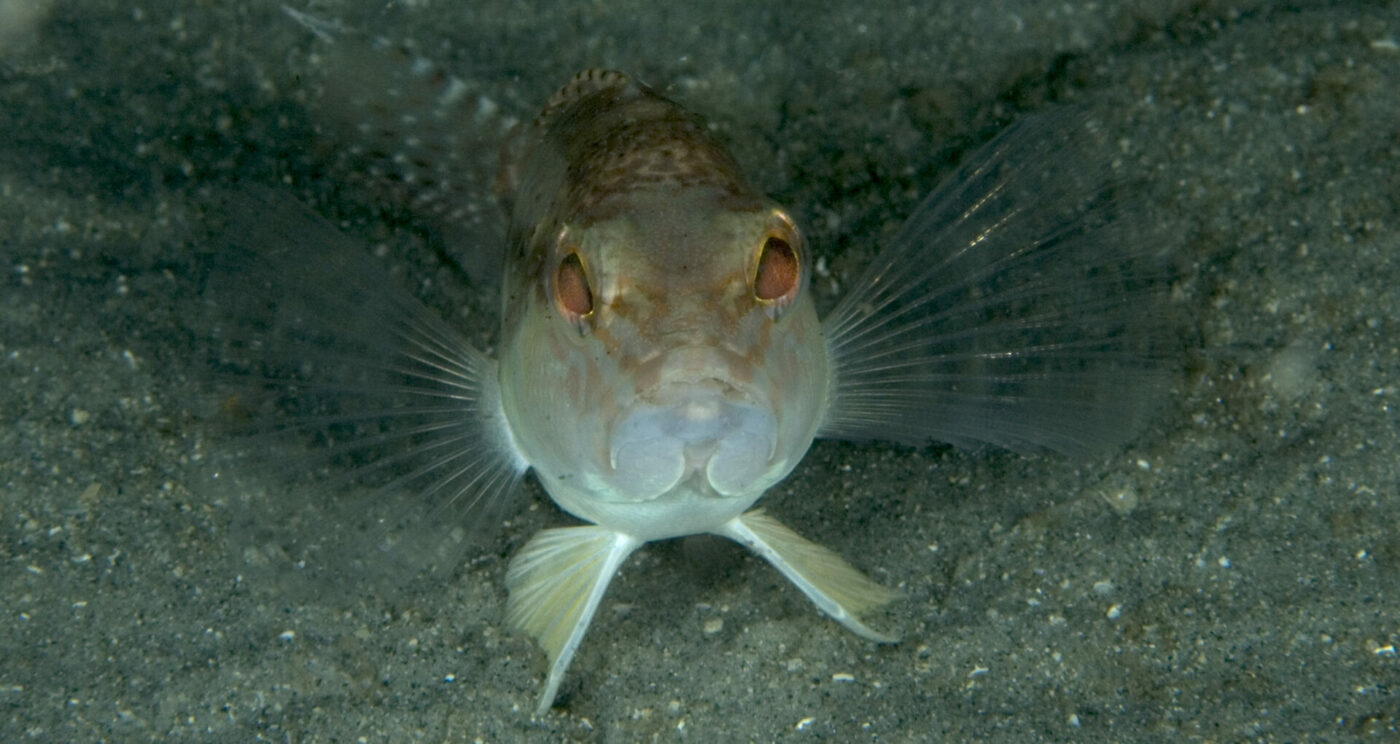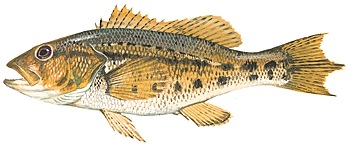Sea Bass, Bank

Sea Bass, Bank
Centropristis ocyurusBank sea bass are easily recognized by their large mouths, tapering bodies with tri-lobed caudal fins, and by their color. Unlike the black sea bass, the bank sea bass is yellow-brown overall, and is marked with black blotches and spots. The black markings consist of three longitudinal rows of blotches on the sides in addition to spots on the dorsal and caudal fins. The head, fins, and front portion of the body often have blue and yellow spots and stripes.
Found in waters ranging from 50-500 feet, the bank sea bass is usually associated with hard-bottom habitats and high-relief areas in deeper waters. They are distributed from Virginia to the Yucatan Banks, and live up to seven years, reaching lengths of 10.7 inches. Nearly all individuals of this species begin life as females and change to males as they age and grow. (This hermaphrodism is found in many fish species.) Collections suggest that fertile females spawn offshore in the early spring, usually for the first time when they are 2 or 3 years old. A 4-inch fish is capable of spawning over four-thousand pelagic eggs during one season, and a fish twice the size may lay about thirty-thousand. The bank sea bass is an opportunistic carnivore that uses its large mouth to swallow crabs, shrimp, brittle stars, callico scallops and small fish.
Regulations

NC, SC, GA, FL
- Season is currently open.
Notes: No minimum size limit. No bag limit. This species is not subject to any federal management measures (e.g., federal regulations).If you are bringing fish back to the U.S. from the Bahamas by water, please see Bringing fish back from the Bahamas.
Ecosystem Component species are species that do not require conservation and management under a federal fishery management plan, but are included in order to achieve ecosystem management objectives.
Recent news
- No current items
Upcoming meetings
Amendments in progress
- No current items